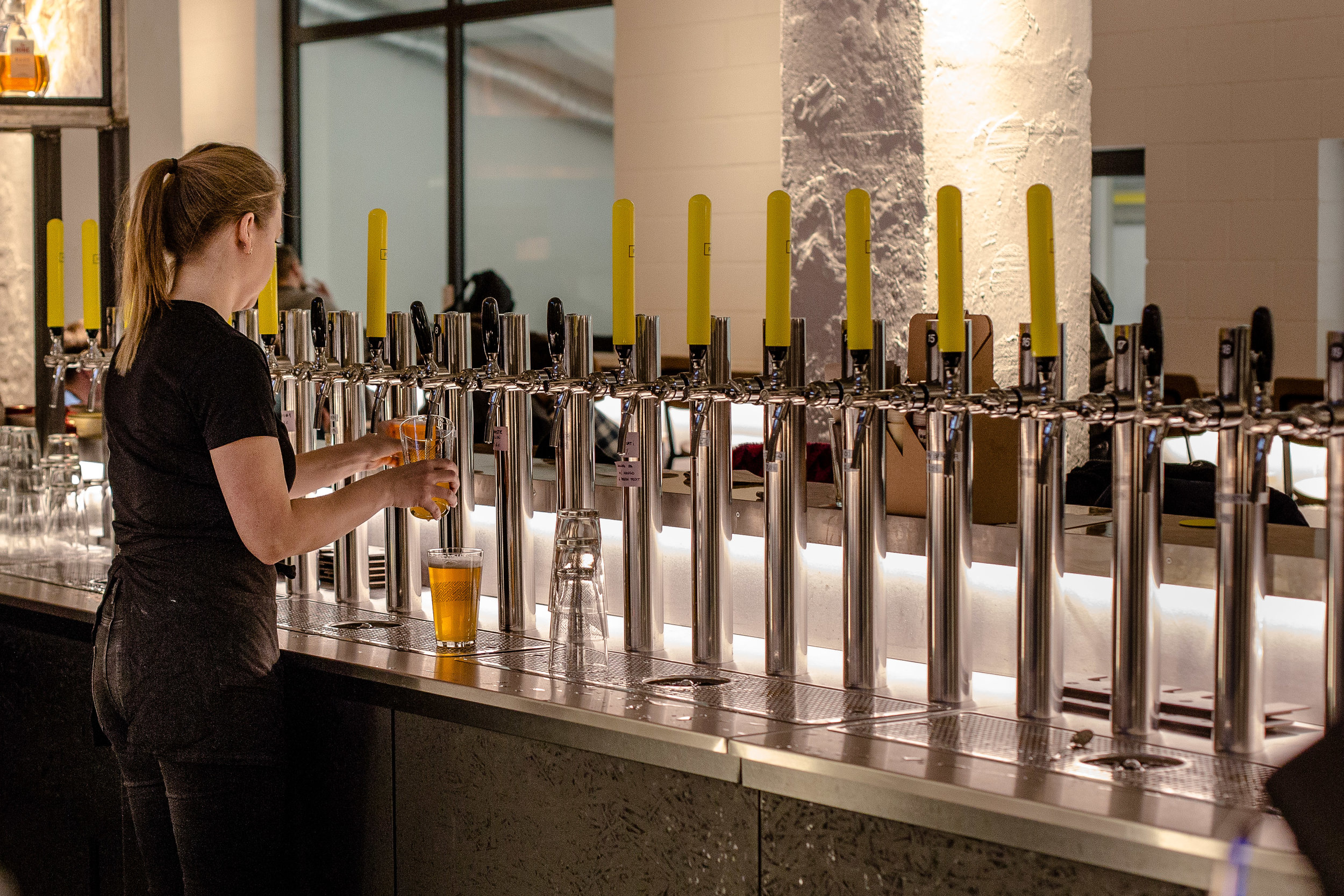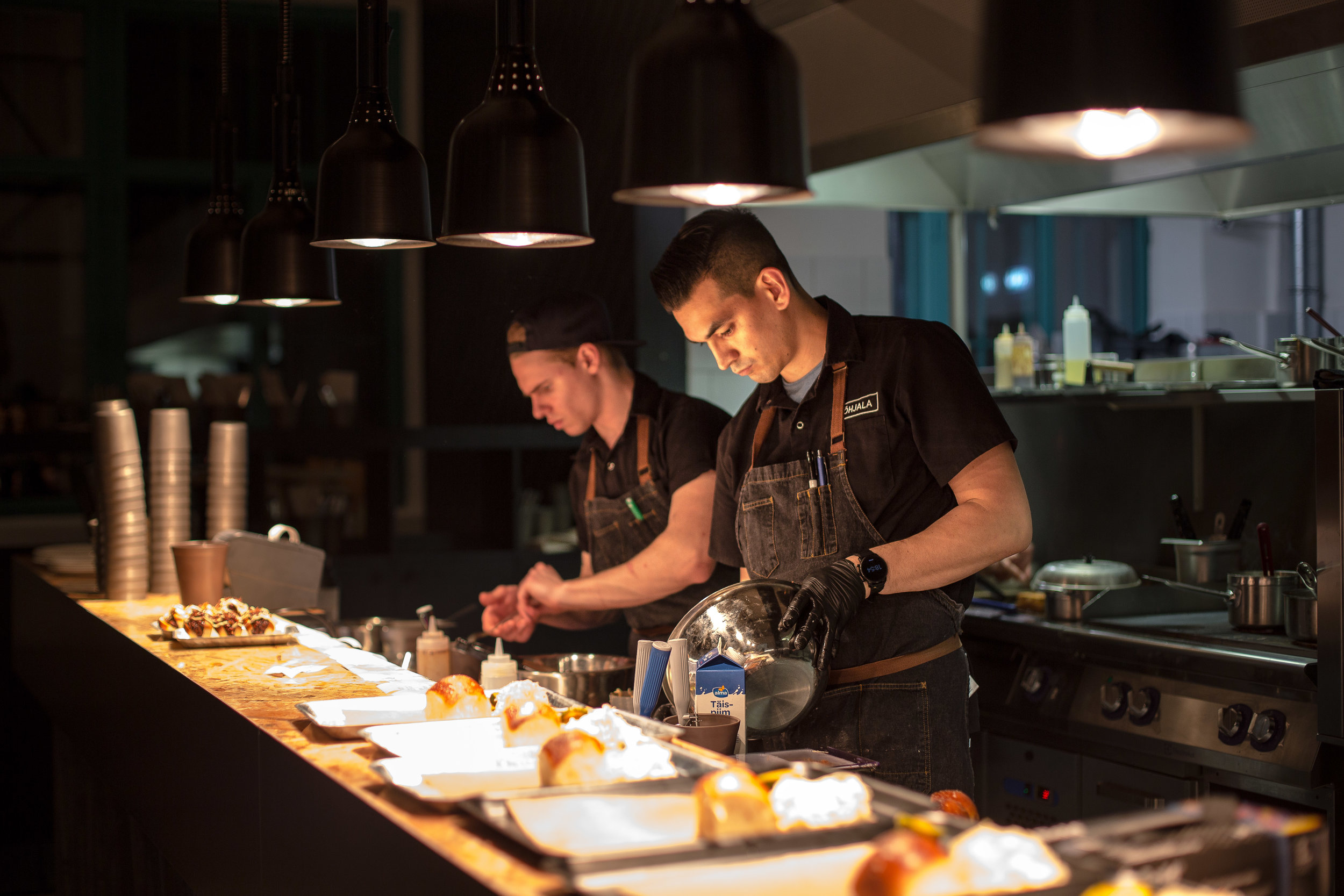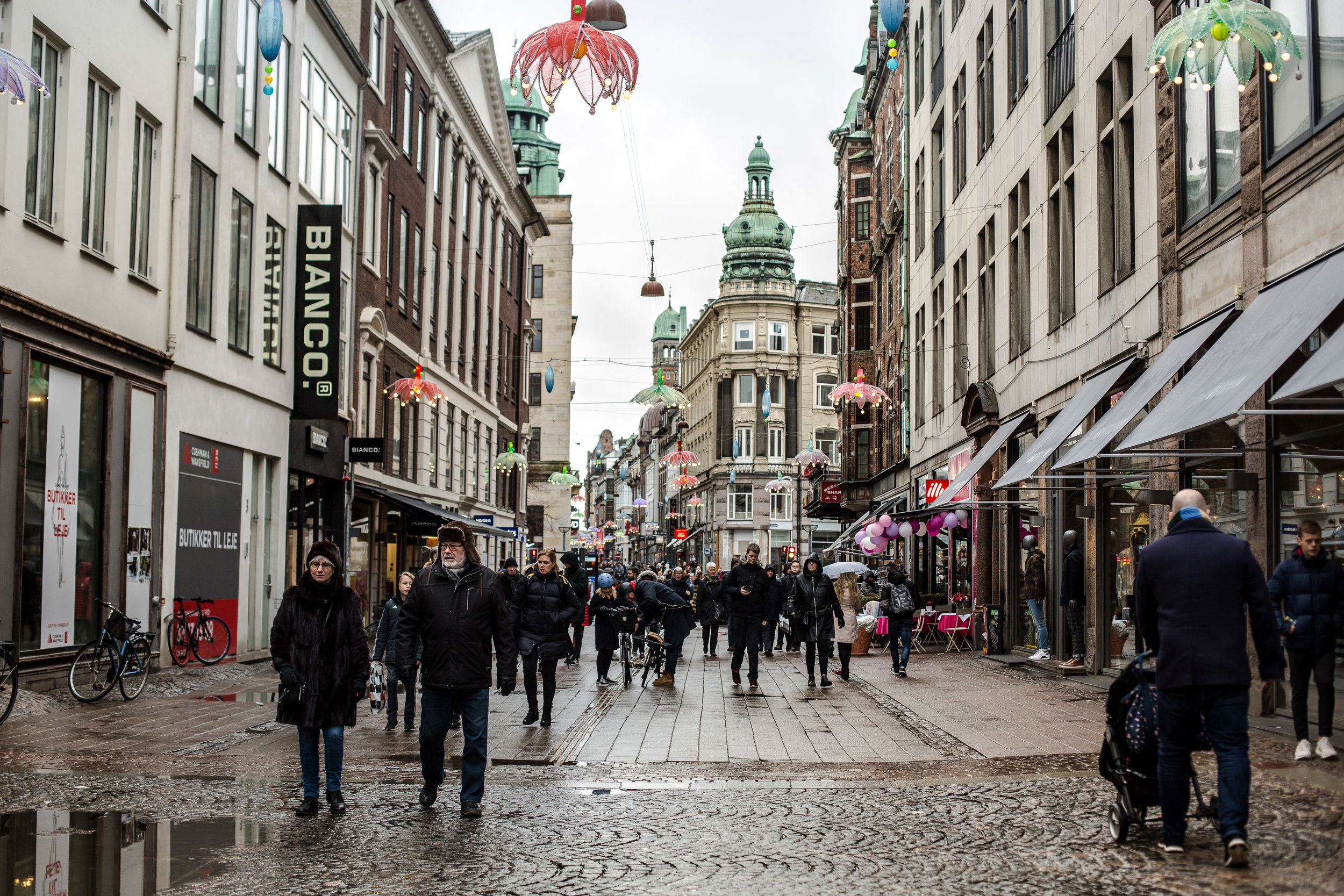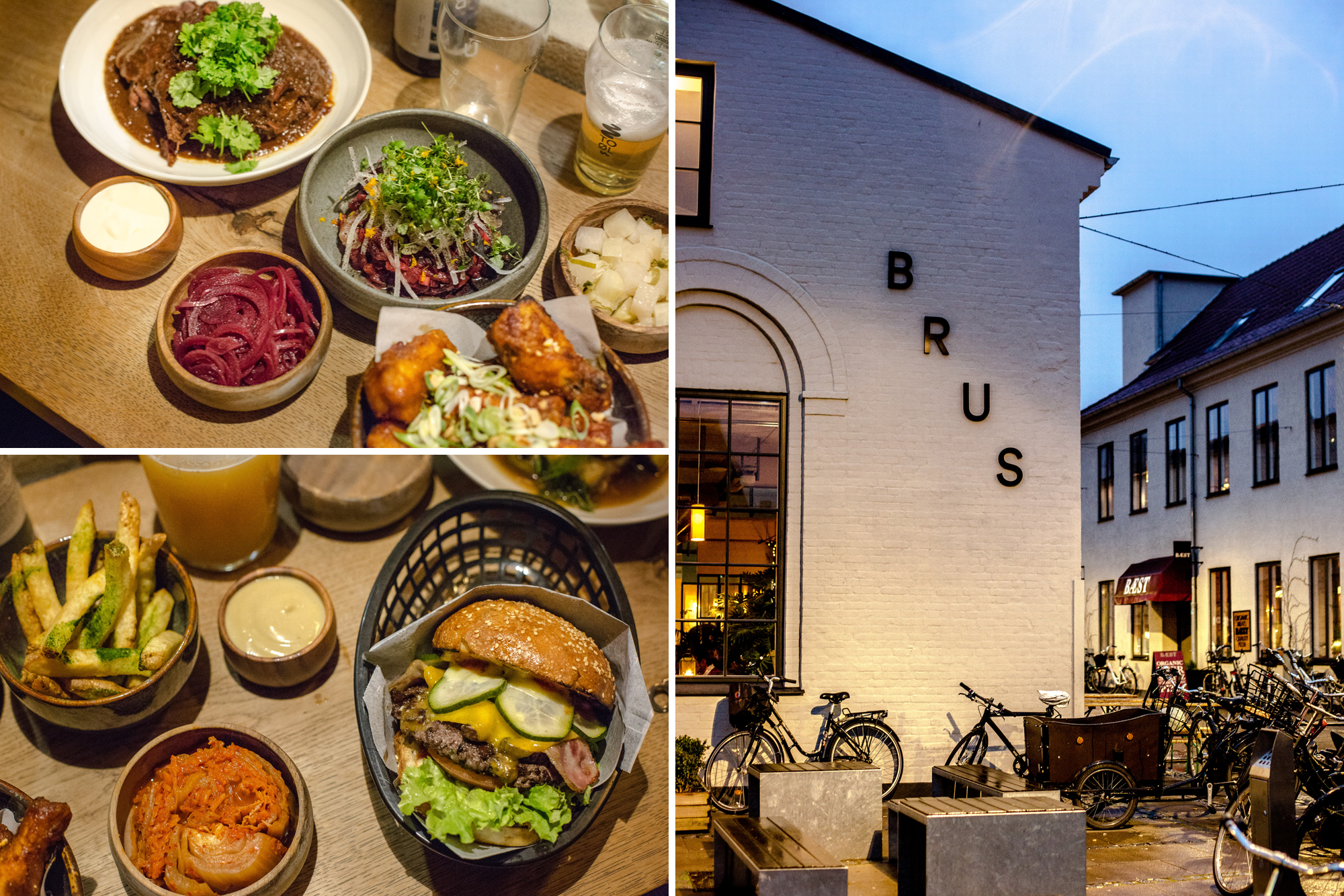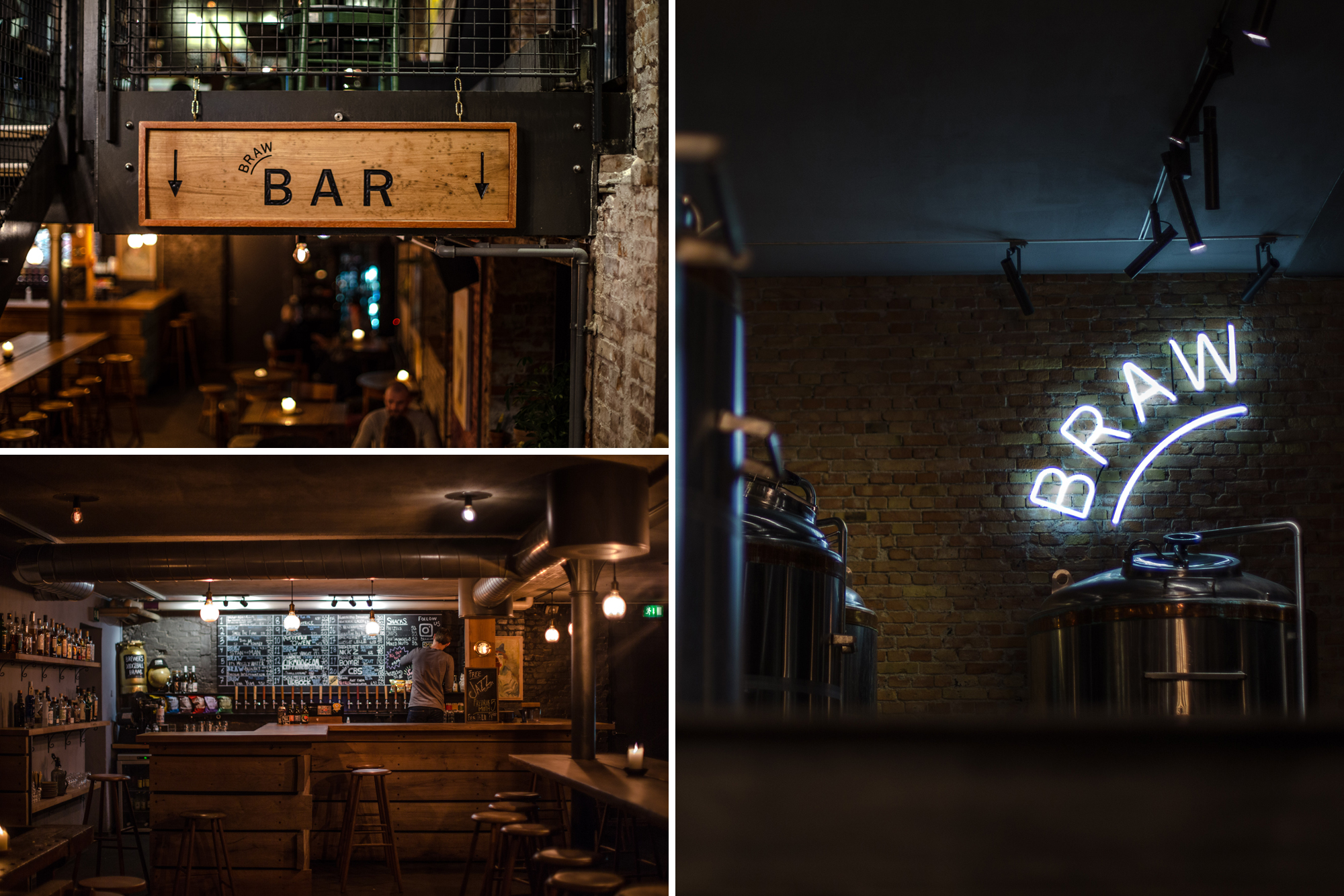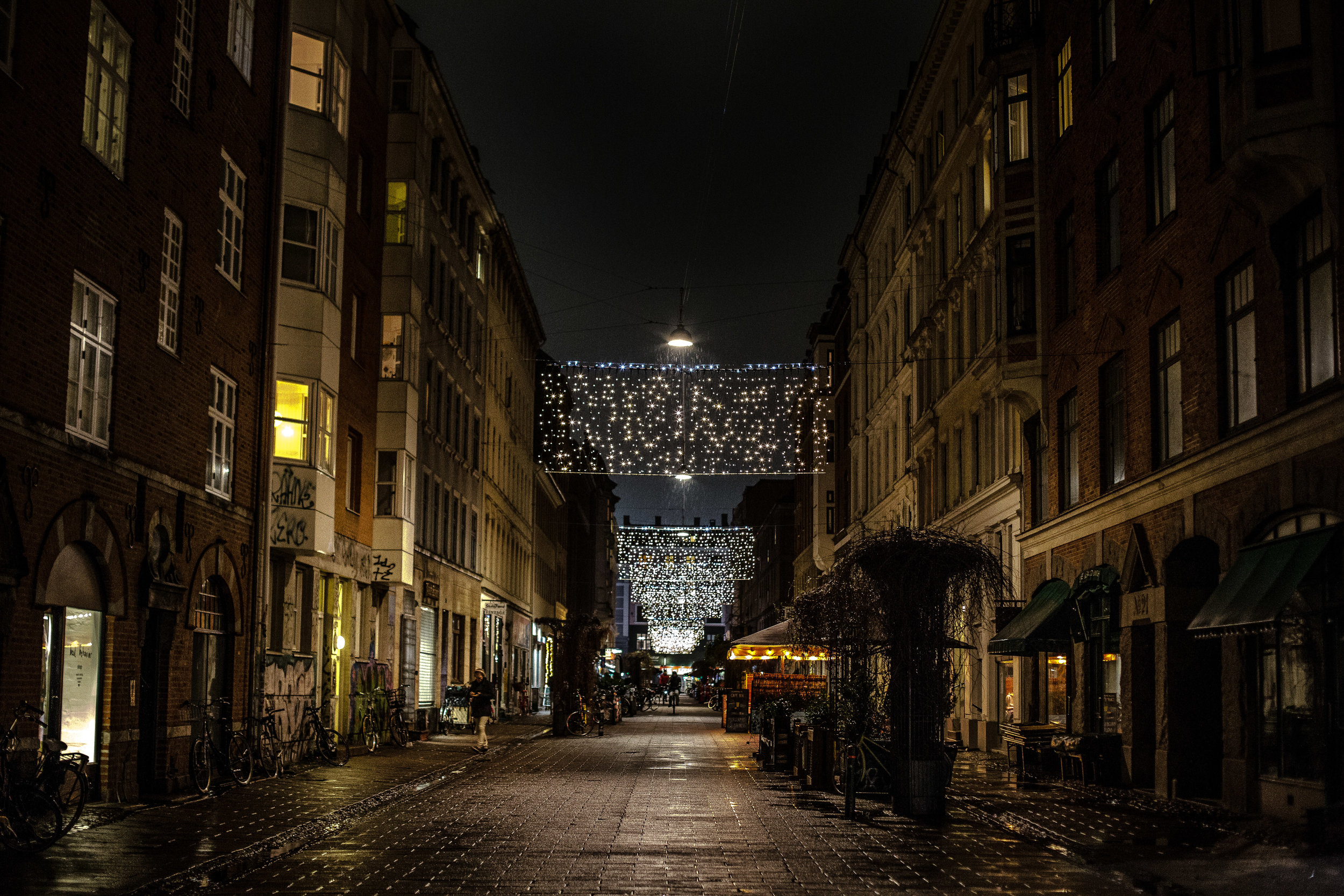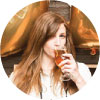Whether for work or pleasure, I’ve found myself all over North America, tipping back glasses and exploring the lonely corners of taprooms after anonymous corporate conferences. Visiting breweries across the country, and fitting beer into my travels, has become an expected part of my routine. But finding myself on a plane to Europe in February for the first time to attend a beer release at Põhjala Brewery in Tallinn, Estonia—and then continuing to Copenhagen, Denmark to visit To Øl? That wasn’t so expected.
The contrast between the two breweries (and their cities) is stark: Põhjala sends about 70% of its beer outside of Estonia for distribution, and is one of very few breweries in Tallinn to have a full kitchen and taproom open. To Øl is finally settling in after years of itinerant brewing, opening its BRUS taproom to a hyperlocal market, and working on setting up a permanent brewing facility. The folks who run Põhjala and To Øl are close friends. They have similar philosophies and approaches to hospitality. And, unsurprisingly, they’ve collaborated on a beer or two.
4,456 miles seems like a long way to go to attend a beer release. I can’t remember the last time I went to a similar event at a brewery in my own neighborhood during good weather, much less on another continent, in the Baltics, in the middle of the goddamned winter. But here I am: in the back of a cab shot straight out of hell, en route to a hotel in Tallinn.
[Disclosure: Shelton Brothers paid for our writer’s airfare for this piece, and Põhjala provided a place for her to stay while in Estonia. We’re thankful for their help in making our international beer coverage more comprehensive.]
It’s late Thursday morning when I descend the icy stairs of Port Noblessner, where Põhjala’s new brewery sits near the shores of the Baltic Sea, on what used to be a shipyard. It’s snowing as I pull open the heavy doors and escape the balmy temperatures into a cavernous, dimly lit lobby. There’s a dramatic staircase that leads up to a bright taproom impeccably designed in a style I’d call “plywood industrial chic.” It’s huge, with high ceilings; big windows line the walls, and a state-of-the-art kitchen sits in the back overlooking the entire room.
I find Peeter Keek, my host for the next few days, sitting at the bar. Within minutes of introductions, He’s pouring my partner Bria and me drinks, and has dashed off to the kitchen to order us food. The thing to know about Keek is that the man never rests. If he’s ever calm, other brewery employees confide to us, he’s likely at his most explosive. For that reason, I’m happy Keek is in his element: talking to kitchen staff, returning to our table to chat some more, finding us our next drinks, moving frenetically, ensuring we’re having a good time.
“We ran out of space at the old place. We took stock. We had to define ourselves. We had to grow or become a niche brewery. I was like, ‘What the fuck? We need money!’”
During rare moments of stillness, we talk about Estonia, how he grew up in Tartu—a university town about two hours southeast of Tallinn—spent a year in New York, and found his way back to Tallinn. Soon, a platter is placed in front of us. It’s Texas-style barbecue time in Estonia, folks. Burnt ends (the first and the best of the day, we’re told), pork ribs that were effectively bone-in-bacon, smoked sausage, cornbread, elotes, slaw—it seemed too good not to be the real thing. I soon find out that Põhjala’s head chef Mike Holman spent some time in Texas after leaving his hometown of Vancouver, which gave him the chance to perfect his ’cue.
Holman’s excited to offer me a slice of banana cream pie with fudge that’s served with Põhjala’s Cherry Bänger, an Imperial Stout. The cherry loves the banana, and the chocolate loves the vanilla. It’s a perfect pairing, and one that Holman credits to his fiancée, Hannah, who runs the pastry program.
“There's very few pairings I actually get a taste [of] that have a certain effect on me, like a wine-and-food pairing might have,” he says. “This was a time when I thought, ‘That's fucking magical.’” It is fucking magical.
Sufficiently stuffed, the three of us set off to explore the building and all its nooks and crannies. Põhjala’s taproom has only been open a few months, and when we visit, production is still divided between the new site and the original, much smaller brewhouse in Tallinn’s Nõmme district. The new facility, complete with full laboratory and a bottling line, is yet to be broken in: there’s a pristine hum to the equipment, a sterility to the wide-open space.
Põhjala began brewing in 2012, releasing a few beers with a contract brewer while the founders prepared for a build-out. “None of us had hundreds of thousands of dollars in our pockets,” Keek says, and so when their previous facility opened in 2014, they brewed to a relentless pace. Eventually, they came to familiar crossroads.
“We ran out of space at the old place. We took stock. We had to define ourselves. We had to grow or become a niche brewery,” Keek says. “I was like, ‘What the fuck? We need money!’”
Keek and his cofounders Tiit Paananen, Enn Parel, and Gren Noormets set out to find funding to support the eventual opening of their new building. The money they earned was a mix of private loans and fundraising from ~20 investors, most of whom were from the IT and start-up worlds.
“It’s very common in Estonia for this younger generation. [Most of our investors are] entrepreneurs. They don’t have business ambition, but it’s very hip to brew, so we don’t have sharks on board who just want to make a buck,” explains Keek. That freedom means the brewery has license to follow its experimental whims.
“There is really no one on our scale in the Baltics, or Finland or Russia for that matter. There are brewpubs, but they would have a 20-hectoliter [17-barrel] fermenter at most.”
We enter Põhjala’s lab, managed by Samu Heino. He’s been with Põhjala since 2014. He studied microbiology in Finland and learned the beer side of things from working with the Põhjala team. “There’s a lot to do,” Heino explains. “I’m just trying to keep all the beer the same.”
Looking at the equipment present, it’s easy to conclude that Heino has reduced his duties to their simplest terms. As Keek puts it, “At the old brewery, I knew how things worked, but I do not know the meaning of the stuff around here. Lots of chemistry.” I nod in agreement as we finish off our brewery tour and head outside for a walk around Tallinn’s Old Town.
Keek walks fast. Bria and I are a few steps behind as we trudge along the snow-covered sidewalks. It becomes clear early on that Keek is a walking, talking encyclopedia of local history.
Even in the dead, gray doldrums of winter, he adds color to our journey. He explains the medieval history of Toompea Castle, which today houses the Estonian Parliament; how to tell the difference between Soviet and post-Soviet buildings; and how Tallinn is slowly but surely gentrifying—how its rapid economic development is changing the city. The history lesson continues as we spend the next two-and-a-half hours popping in and out of shops, restaurants, and bars. He seems to know everyone.
Eventually, we stop at a small speakeasy called Burger Box. The inside is as lo-fi as it gets; it’s dimly lit, and the walls, tables, and bar tops are all constructed out of particle board. There are styrofoam plates, and cardboard menus stapled to the wall, and just a few tap handles and bottles visible behind the bar. It feels uncannily like every hunting shack in northern Wisconsin that I visited in my youth. Keek used to be part owner of Burger Box, and still stops in every now and then.
The three of us down a shot before heading out back to the patio. Põhjala’s high-low aesthetic is a nod to this old haunt, Keek says. Both places lack fussiness, and serve up an immediate sense of familiarity and comfort.
We arrive back at the taproom in time to celebrate the release of a collaboration beer brewed with Austin, Texas’ Jester King Brewery. Despite its size, the space is packed full, and we join a table of Põhjala staffers already enjoying themselves. The release, Port Over Easy, is a port-barrel-aged Imperial Baltic Porter brewed with caramelized Estonian birch syrup. It came about when Jester King staff attended the Tallinn Craft Beer Weekend, which Põhjala hosts.
Unless you’re from the Baltics, it’s hard to claim you’ve ever had a truly authentic Baltic Porter—still, Keek says, Põhjala receives criticism for its beer. “We get emails all the time because it’s not bottom-fermented, it’s top-fermented,” he says. I shrug my shoulders and tip my glass back—it’s Baltic Porter to me. The beer is thick, resinous, sweet, mineral, and pairs fantastically with beef tacos covered in a dark mole sauce. I ask for another pour, and a second serving of tacos.
As the evening wears on, I find Tõnis Vaher, who works in marketing; Rait Kulli, who’s in production; and head brewer Christopher Pilkington tucked back into a cozy corner of the taproom.
Pilkington was working at BrewDog back when he met Keek, who was visiting as a trainee for a week in 2012. The two hit it off, and Pilkington grew curious about Põhjala’s plans. He visited a few months later. They brewed a few batches together, and a year later, he officially made the move to Estonia.
We spend the next few hours talking about the new brewhouse, how Pilkington had to adjust to a more efficient system, and what that means for hop profiles. He also tells us that we need to take a walk in the forest across the street from the old brewery while we’re there: the spot has inspired an entire line of Põhjala’s beer, fittingly called the Forest Series. In the new location, Põhjala has traded forest for coast. To this end, Vaher proclaims Põhjala can now start making beer with seaweed.
The night continues. Beer and food become a blur. Bria and I have been awake over 36 hours at this point, and finally find our way back to our hotel around midnight. We find out the next day that most of Põhjala’s staff stayed at the taproom until 4am, only to return a few hours later for work. That’s employee dedication.
Keek stops by the hotel to pick the two of us up. We head to the old brewery some 20 minutes away, and pull into a cluster of buildings surrounded by trees. A pink building with the Põhjala logo on the door lets us know we’ve arrived. We peek inside to see boxes and bottles scattered around, as well as some smaller tanks and fermenters: the remnants of a once-bustling small brewery now in transition to obsolescence.
Põhjala is easily the biggest of the ~20 breweries that call Tallinn home. As a country, Estonia is still very traditional in its preference for Lagers, but Põhjala is proving to be a locomotive in the local market, paving the way for a more diverse beer scene, and offering a model of what a brewery can be. The old building is small, and no longer capable of providing the space—physically or metaphorically—for Põhjala to fulfill that destiny.
Our tour is quick. We wait for Heino to finish up some work in his old, makeshift lab while Keek, Bria, and I throw snowballs at the massive icicles that have formed on the building’s roof. Then we head back to the shores of the Baltic Sea, to glimpse what would be a beach, if not for the winter skies and snow beneath our feet.
When it’s time to warm up, we head back to the taproom for an afternoon beer, where Enn Parel, one of Põhjala’s co-founders, is at the bar. We chat about the old brewery, the new brewery, bottling lines, and Italian Lagers. How unusual Põhjala’s growth has been and how unique its build-out is to the region. “There is really no one on our scale in the Baltics, or Finland or Russia for that matter,” Parel explains. “There are brewpubs, but they would have a 20-hectoliter [17-barrel] fermenter at most."
Parel wraps up lunch and heads to a meeting with the rest of the tenants in the Port of Noblessner. They’re working on a strategy to push the area forward, with renovations and new businesses to help bring in more visitors. We say our goodbyes, finish our drinks, and bide our time before Keek treats us to dinner at his favorite restaurant.
Moon is all about modern Russian cuisine. The chef exited the fine-dining circuit to focus on high-end comfort food. Keek invites his wife Trinne and daughter Kart to join us. We order beef tartare with adzika, smoked egg yolk and pickled mushrooms, and pike fish cake with greens and mussel sauce as appetizers, and I try buckwheat blinis served with whitefish roe, red onion and dill sour cream. We wash it all down with Portuguese and Russian wine, and head back to the brewery for our nightcap before succumbing to a food coma.
Our arrival in Copenhagen is early. It’s much warmer, raining, and thankfully without snow. We make a pit stop at Andersen & Maillard, where I order a slice of sourdough and cheese to accompany my coffee, and revel in the Nordics’ mastery of bread.
After a quick stop at our Airbnb to drop off luggage, we start the tourist stroll: the pedestrianized Strøget, Torvehallerne market, a quick walk past Tivoli Gardens amusement park, and finally up to the top of Christiansborg Palace’s Tower, which overlooks the city. A day of endless walking through the cobblestone streets, past piles of parked bicycles, and in and out of shops has stirred up our appetites. We head to Nørrebro to visit To Øl’s brewery, taproom and eatery, BRUS. Inside, we find Emil Sylvester Jakobsen, our next gracious host.
Jakobsen is waiting at the bar when we arrive. He joined To Øl after moving to Copenhagen from Holm to work in the coffee business in 2015. One thing led to another, and eventually he found his way to his current gig as the brewery’s sales and marketing manager.
I grab a beer, we chat for a bit, and he hands us a menu, but it’s just for show: he goes rogue and orders 90% of it for us. While we wait for food, he takes us on a quick tour of the building. It’s the first real home To Øl has had, and the brewery is ambitious in its undertakings. A 10-hectoliter [8.5-barrel] brew kit stands adjacent to the kitchen. It’s so close, the amount of fermentation going on in both the brewery and the kitchen poses a real risk of cross-contamination. But it’s been a great way for To Øl to learn the dos and don’ts of handling production on its own, all while learning the ropes of the restaurant business.
Unsurprisingly, the food has a heavy focus on fermentation, which is both a natural connection to brewing beer and a traditional aspect of Nordic cuisine. “I think if you want to be on the frontier of beer, you’ve also go to take in what’s going on with wine, cider, kimchi, whatever. Instead of thinking about hops, malt, yeast, we learn from our kitchen staff,” Jakobsen explains. “I think fermentation is definitely the BRUS way.”
“I think if you want to be on the frontier of beer, you’ve also go to take in what’s going on with wine, cider, kimchi, whatever. Instead of thinking about hops, malt, yeast, we learn from our kitchen staff.”
We arrive back at our table to a literal smorgasbord: salt-and-vinegar pork rinds the size of elephant ears, Korean chicken wings, pickled kohlrabi and onions, fermented fries, beef tartare, a bacon cheeseburger, baked cod, and braised veal cheeks. We attempt to put a dent in the food while we chat about To Øl’s history of collaboration beers, and whether or not its core range will expand (probably not; there are just too many fun things to experiment with).
I ask Jakobsen about the Nørrebro neighborhood, which is packed with just about every type of business imaginable. Bars, restaurants, cafes, bakeries, theaters, shops. It’s dense but fosters a cozy, calm, and relaxed ambiance.
“The whole scene in Copenhagen is crazy,” he says. “On every corner there’s a natural wine bar, a cinema. The pizzeria across the street is rated top 10 in the world and has a vermouth bar upstairs. People can eat here and go upstairs to see a show. It’s like, can there be any more coffee shops in this neighborhood? Is there room for that? And yes, there is.”
We finish up dinner, and Jakobsen offers to take us to some of his go-to nighttime hotspots. We’re ready to see what Nørrebro has to offer.
Our first stop is Pompette, a wine-shop-bar hybrid specializing in natural wines. It’s a small space, a little rough around the edges, with distressed concrete walls and reclaimed wood tables. We sample a few small pours of brightly colored, funky wines before heading out to 1420: a Belgian beer spot packed to the brim with Lambics. We meet the owner, Dennis Vansant, who is originally from Antwerp; his accent means I mistakenly assume he’s American. We decide to split a 2014 3 Fonteinen Oude Gueuze Golden Blend: rare, I’m told. Vansant shows us his cellar, where ~300 bottles of Lambic are stored. He pulls one off the shelf that’s worth $15,000. I immediately step out of the cellar for fear of destroying something with more value than my car back home.
Our last stop for the evening is Himmeriget. It’s very small but cozy—you might even say hygge—as we nestle in at the bar. There are some craft taps available and a staggering bottle-and-can list. The back wall is lined with specialty liquors. We try out a habanero spirit, which is earthy, salty, and unlike anything I’ve tasted before; there’s also a bubblegum spirit, which equally blows us away. We spend the remainder of the evening trying various concoctions that Jakobsen orders. At some point, I realize my eyesight is failing from a mixture of alcohol saturation and my contact(s?) falling out. I follow Bria’s blurry figure back to our Airbnb, and pour myself into bed.
Breakfast brings us back to Andersen & Maillard for a chocolate croissant. We spend the morning walking through Assistens Cemetery: the final resting place of author Hans Christian Andersen, philosopher Søren Kierkegaard, and many other Danish notables. Just north of the cemetery, we settle in at Coffee Collective on Jægersborggade for a pick-me-up and some coffee-infused kombucha.
Because we’re in the vicinity, we return to BRUS to see the space in the light of day. I grab a few pints before continuing to rack up the steps while meandering through Nørrebro.
After a few hours, I can feel my body going through cheese withdrawal. We descend the stairs into Mikkeller & Friends’ lower-level taproom as it begins to rain. We order a charcuterie plate and drink small pours of beer as we wait out the weather before hitting the sidewalks to rifle through thrift shops and peek inside storefronts.
After a low-key dinner, Bria is content to turn in. Not wanting to call it quits on a fast and furious few days, I step out for a final nightcap. I head down the street and into BRAW Bar: the taproom of a small, organic brewery, located in a restaurant basement. It’s mostly empty this late on a Sunday, dimly lit and the perfect environment in which to wind down with a Baltic Porter. My trip began with Baltic Porter; it only feels right to give it the proper bookend.
We take one more of Jakobsen’s suggestions, and stop at Mirabelle for breakfast charcuterie, a croissant, and some coffee. I think I’ll miss the breads and cheeses when I depart more than anything—maybe even the beer.
Past security and into the belly of CPH airport, we find a spot at Mikeller’s bar in the terminal. I order a beer. We endure a flight delay. I order another. This cycle repeats a few more times as our departure time keeps getting pushed back. Delays would normally irritate, but the memories from the last few days manage to dull any negativity. I have the next eight hours to reflect on the people and the places; the breads and cheeses. Maybe I’ll even get some sleep.















